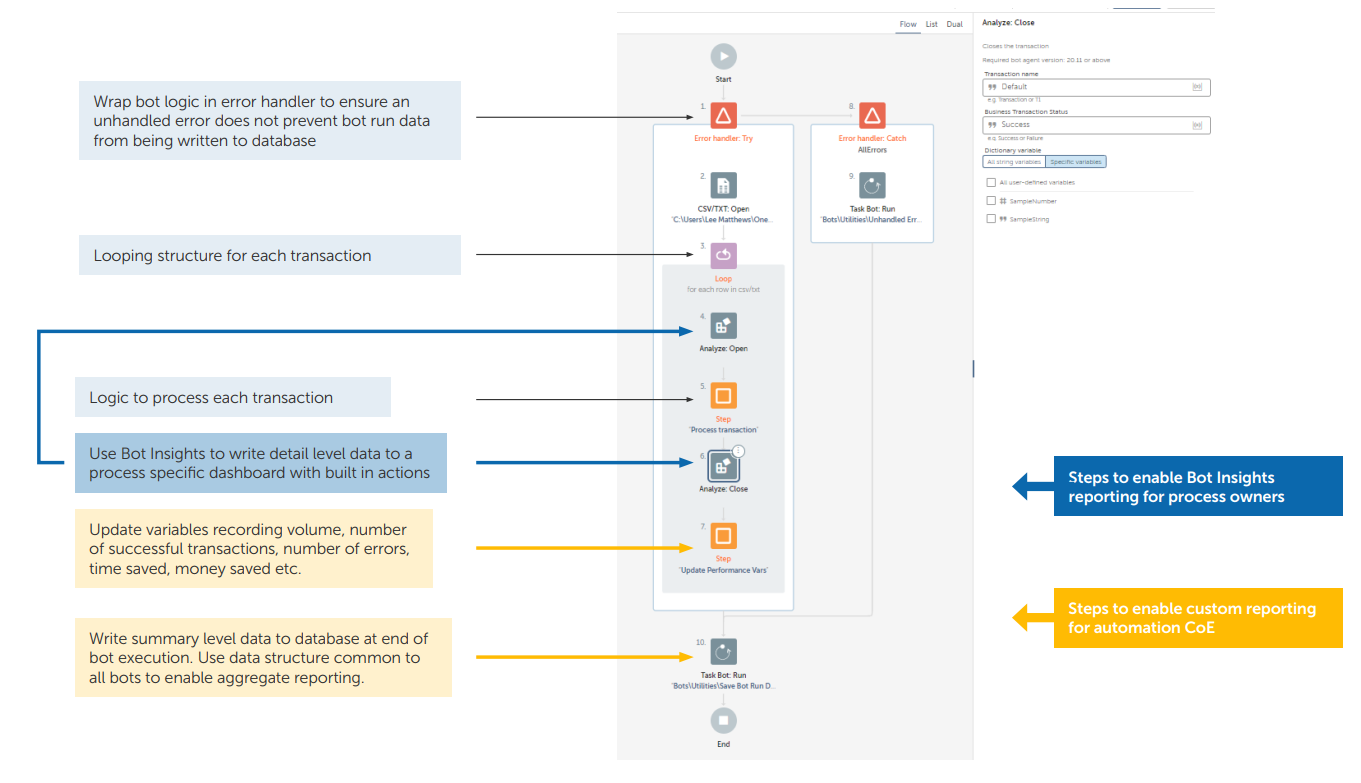Please note that this document is part of The automation Success Framework and is referenced by the following parent document. This specific article discusses the importance of effective automation reporting and proposes a best practice approach.
Building effective reporting into your automations is very important for many reasons. Some examples are:
- Having a dashboard / reporting to supervise operation of the automation allows business users to monitor what their digital workers are doing.
- Without some form of oversight of the process, business users may not take proper “ownership”, and may place undue expectations on the Automation CoE to manage the outcomes.
- It is important to monitor what is triggering exceptions to the process and how many there are. This allows for proper planning of enhancements to the logic.
- There should be a way to track the notional benefits being delivered by the automation, so the Automation CoE can track ROI of the investment in and maintenance of the automation.
Reporting Requirements
There are two distinct parties who require reporting: the Automation CoE, and the Business Process Owners. These two parties can have conflicting reporting requirements, as outlined in the comparison below.

Automation 360 has a built-in reporting capability called Bot Insights that makes it very easy to collect data about your automations when they are running. Bot Insights creates a separate dashboard for each automation that leverages the capability, and the dashboards can be customised as required. It is therefore the perfect reporting tool for the Business Process Owners. The automation CoE however need a single dashboard that can analyse data for ALL
automated processes. The Automation Anywhere CoE Manager solution provides this functionality.
Third Party Reporting
Some organisations may prefer to use a third-party reporting tool for CoE reporting. The screen shot below is an example of how to incorporate third-party reporting for the Automation CoE, along with a Bot Insights dashboard for Business Process Owners. Even if Bot Insights is not used, this same logical approach can be used for an entirely 3rd party reporting solution. The key points to note are as follows:
- Data for Business Process Owners is collected within the transaction loop. This allows for transaction level data to be collected. This is typically the level which suits the business needs for reporting.
- For the CoE reporting we simply increment counter variables within the loop, and then write the final values to an external data source at the end. This means we do not have transaction level data for CoE reporting, only aggregate values for each bot run.
- It is important to wrap the logic within an error handler, as you want to avoid the scenario where aggregate data for CoE reporting is not written to the data source because a single transaction failed.

